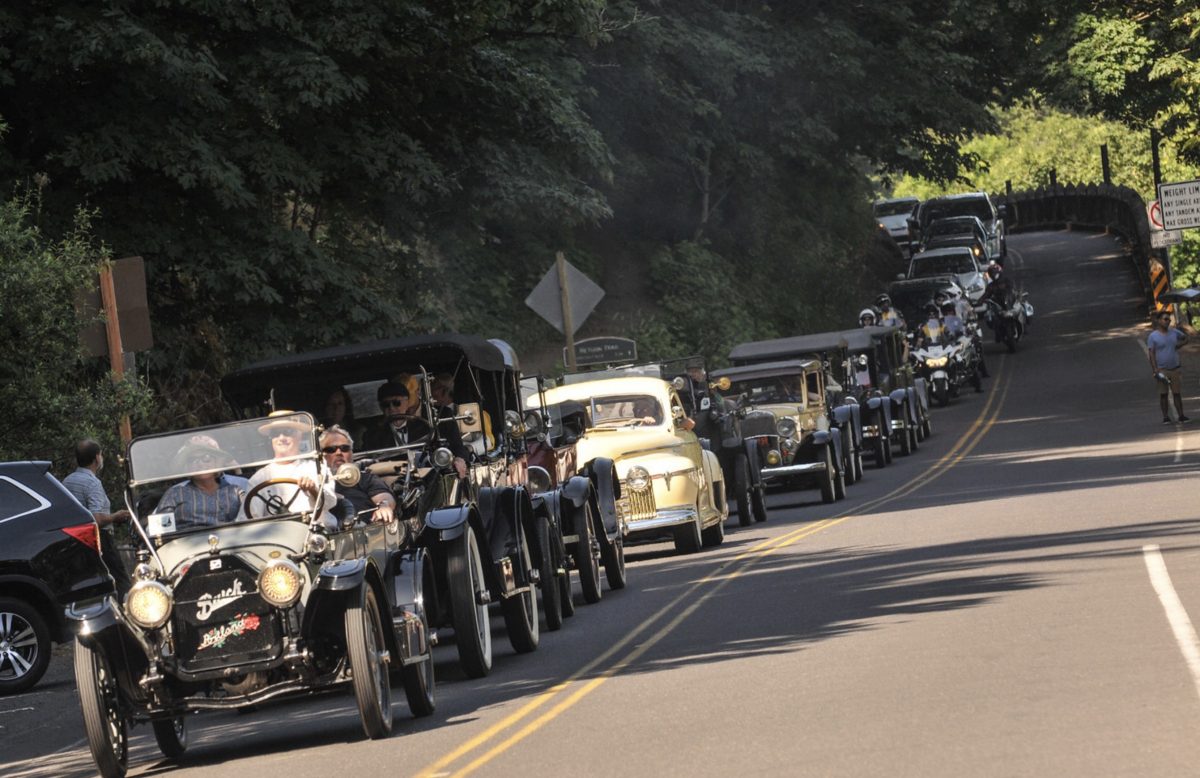
(Photo: J. Maus/BikePortland)
The head of the organization whose mission is to protect the Columbia River Gorge wants fewer people to drive cars through it.

(Photo: Friends of the Columbia Gorge)
Friends of the Columbia River Gorge Executive Director Kevin Gorman penned an article on the group’s website last month titled, How Much Love Is Too Much for the Gorge?.
“As we approach the summer season of mile-long backups on the Historic Columbia River Highway and full trailheads full by 9 a.m.,” Gorman writes, “more voices are asking what’s causing the congestion and what can we do about it?”
Gorman points to three main congestion culprits: a rise in tourism, booming regional population, and the inconvenient truth that around 99% of Gorge visitors arrive in an automobile.
What caught my eye were Gorman’s thoughts on a “holistic solution” to this nightmare. He says Oregon should look to Utah for inspiration, where authorities banned driving and introduced a shuttle bus service on the main scenic road in Zion National Park during the busy season. “Despite initial concerns, use of buses was a huge success,” Gorman shared. “Congestion on the road disappeared, bicycles started showing up, and the shuttle service provided local jobs.”
Advertisement

(Photo: J. Maus/BikePortland)
As we’ve reported, ODOT has already taken an in-depth look into similar measures for the Gorge. But so far, only a plan has been completed and nothing has been implemented. The state-run Columbia Gorge Express bus service has been a big success, but it’s not enough to lure people out of cars and make a real dent in congestion. At least not without a major boost in funding.
Gorman also plugged his group’s Gorge Towns to Trails project — a proposed 200-mile loop around the National Scenic Area that would create more recreational opportunities and could disperse visitors over a wider area. On a related note, ODOT continues to make exciting progress on the carfree sections of the Historic Columbia River Highway. The latest piece — a three-mile, $18 million segment from Wyeth to Lyndsay Creek — is slated for a ribbon-cutting August 3rd.
How does Gorman intend to pay for projects that will help rid the Gorge of its motorized menace? Charge people money to park their cars. He cites success of a program in Portland’s Washington Park that uses parking fees to pay for shuttles and other TDM strategies.
From the central city to our beloved Gorge, the negative impacts of too much driving know no boundaries. It’s time we set some. And it’s great to know that the coalition to do something about it is growing with people who “get it” like Mr. Gorman.
— Jonathan Maus: (503) 706-8804, @jonathan_maus on Twitter and jonathan@bikeportland.org
Never miss a story. Sign-up for the daily BP Headlines email.
BikePortland needs your support.

